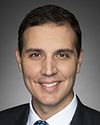Thank you very much for the invitation to appear. I very much look forward to sharing my thoughts and engaging in some conversation.
I did share with you two graphics to illustrate my comments today. The first is a sort of typology that we've been building around the diversity of the far-right movement. That's really my focus, looking at right-wing extremism specifically. I want to sketch out in a very short period of time some of the contours associated with the far right that we identified in the study that we published in 2015, which was funded by Public Safety, but also coming out of the current study that we're working on, also funded by Public Safety, which is an update of that first one.
The first graphic, the categories of the far right in Canada, is quite important in terms of reminding us of the diversity of the movement when we think about the far right. Even in 2015 when we were looking at the movement, the focus was really on those very traditional kinds of groups that you see at the top—skinheads, neo-Nazis, white supremacists and what have you. Since then there's been sort of a diffusion of the movement in different directions, not a splintering so much as a coalescing into much more discrete categories so that there are identifiable strands that are specifically anti-Muslim, specifically anti-immigrant or specifically misogynistic, for example.
In addition to that, we have the accelerationists. Each of these I can unpack a little bit for you in the Q and A if you like, but the intent of this graphic is just to highlight the diversity that we're seeing within the movement.
The second graphic that I shared with you is the distribution as we saw it in 2015. You see the concentrations there in Ontario, Quebec and Alberta in particular, and to some extent in B.C., for a total, as a conservative estimate, of just over a hundred active groups associated with some arm of far-right extremist ideologies.
In the current study, we've identified over the past four to five years an incredible growth in those numbers to at least 300 groups now, and again, that is across the country. We're seeing more activity down east for example, but other than that, the concentrations have stayed fairly similar, that is, with higher concentrations, again, in Ontario and Quebec and Alberta.
I'll just share with you a few of the other trends we're identifying in the current study. I referred to the growth in numbers that we're seeing, and I should say that's growth in numbers of groups and growth in numbers of individuals drawn to various elements of far-right extremist ideologies. Just as we're seeing a diffusion of the movement itself, in terms of the numbers of focal areas, we're also seeing a diffusion, or an atomization almost, with respect to the movement itself—that is, more individuals being drawn to small elements, sort of cherry-picking from the narratives of an array of different groups and ideologies to suit their own needs, whatever they may be.
We are seeing a lot more of those floaters, as we're starting to call them, but we are also seeing more groups, that is, new chapters of groups that were existing in 2014 and 2015, as well as new groups that have emerged on the scene, most notably the Proud Boys and Soldiers of Odin.
We're also seeing a shift in the demographics associated with the groups. Just as we tend to think of the far right as the skinheads and the neo-Nazis, I think we tend to think of it as a youth movement. That is certainly still the case. There are an awful lot of youth aged 16 or 17 to 24 or maybe early thirties involved in the movement, but we are seeing many more middle-aged and older folks coming to the movement as well.
Accompanying that is a shift in other kinds of demographics, in terms of education and income or profession in particular. There are more middle-income earners or above. We look at January 6 events in the U.S., for example, as sort of an inflated illustration of what we're seeing here. A fairly large proportion of those people were professionals—accountants and doctors and lawyers—and we're seeing some of that here as well, so it also applies then that many have a higher level of education, university degrees and advanced degrees in some cases.
I think that's especially the case within that element that refers to themselves as the alt-right. These were sort of the ideologues, if you will, of the movement as opposed to the shock troops, who are those more traditional Nazis or skinheads on the streets.
One of the other trends that we're seeing is increasing coalition building or alliances, and early on in this phase of the study, 2015-16, 2016-2017, even 2018, we were seeing much more coalition building across groups, strategizing across groups within the movement, planning and codeveloping protests, rallies, concerts and a whole array of other activities. We've seen a lot of that, but we're also now seeing, in the context of COVID, especially in terms of lockdown and anti-masks and anti-vaccination activities, efforts to leverage or exploit those very mainstream grievances and fold them into far-right narratives as a way of expanding their audience, grabbing people and sort of leading them down the garden path, if you will.
The last trend that I want to highlight is probably one of the most dangerous, and that is that we are seeing an increased fascination with gun rights and with being fully armed within the group. Even for the Proud Boys, one of their mantras is “we love our guns”. We see that in a number of other groups. We see images of them online with stockpiles of weapons and engaging in paramilitary training. We have that, that they're heavily armed.
What we're also seeing—and this is another project we're on right now with DND—is looking at the contours of the far-right within the context of the CAF, because we've had a number of high-profile cases of late. Again, looking at the events of January 6 in the U.S., there is evidence of links between members of the CAF, current or former, and the far-right movement. We have the arms, we have the training and the third dangerous sort of potentially lethal element of that are the xenophobic ideologies that often inform these groups. I think that is one of the trends that we really need to keep our eyes on.
I will leave it at that and flesh out anything that is of interest as we move forward.
Thank you for your time.











